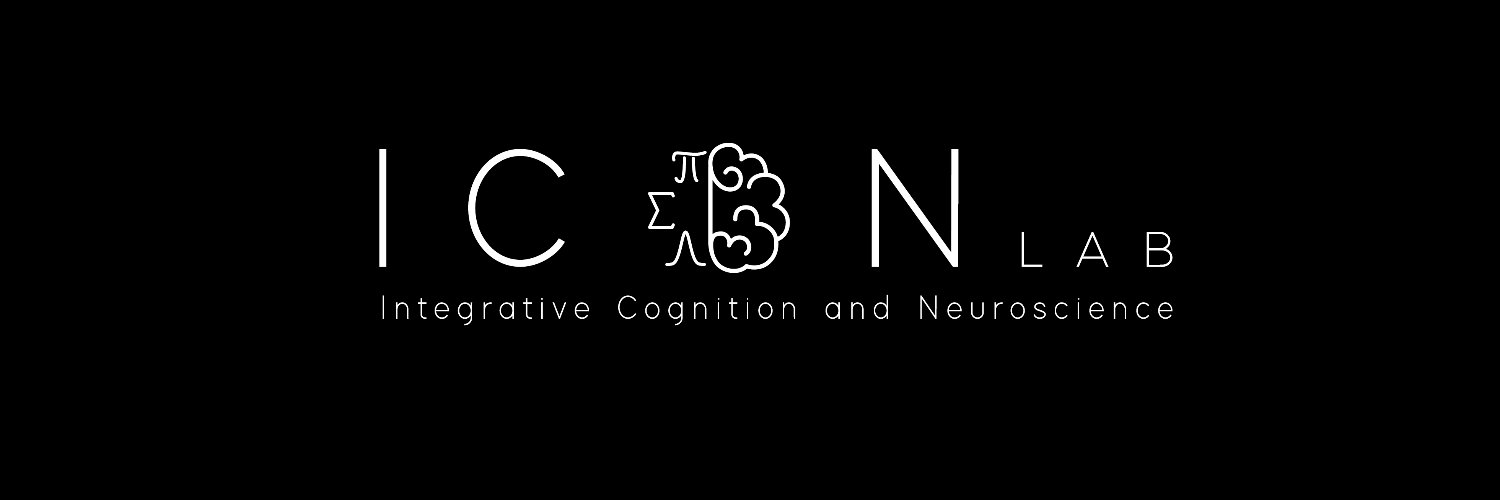
Icon-lab
@IconLaboratory
Official account of the Laboratory for Integrative Cognition and Neuroscience at the University of Maryland - brain, behavior, memory, & cognition
The consistency of memory behavior across people (e.g., recognition, recall) is shaped by many factors — it's great to see further research helping to articulate and disentangle these effects!
Also of particular relevance: recent work by @IconLaboratory & @WilmaBainbridge shows some words are consistently more retrievable across people in cued recall: nature.com/articles/s4156…. 4/n
What happens to visual memory when part of a visually selective brain region is removed? Patient VH, who lost part of his parahippocampal place area and struggled to consolidate scene memories overnight, offers some insights. Read more in Learning & Memory:shorturl.at/JYMu7

Kicking off the week with more great @bsosumd news: @PSYCTerps' Weizhen "Zane" Xie was named a 2025 Searle Scholar, awarding him $300K to build on his existing research on human memory & cognition with a new project concerning semantics. Congrats, Zane! go.umd.edu/xiesearle25
🎉 Our work with NIH collaborators on how human brain neurons efficiently recognizes images is featured in @bsosumd ! Grateful for an amazing team and all the support that made this possible. Check it out! 🧠🔬✨ bsos.umd.edu/featured-conte…

Yay! See you at this year's @VSSMtg! Excited to bring together my undergrad advisors (Yan Bao, Ernst Pöppel) and Zane @IconLaboratory in one project. With a fun set of abstract paintings by contemporary artist LaoZhu, we found that lower activation in DNNs predict higher beauty.
New evidence into how the medial temporal lobe contributes to visual short-term memory precision. Our latest study shows tDCS over bilateral temporal lobes modulates hippocampal-occipital connectivity, affecting visual memory quality. #hippocampus doi.org/10.1002/hipo.2…

We love simpler models, but when they fail to capture individual differences, we have to ask: does simplicity = adequacy? For memory representation, a mixture model often does better at accounting for individual differences. 🧠🔍 link.springer.com/article/10.375…

Nature research paper: Neuronal sequences in population bursts encode information in human cortex go.nature.com/48c4YRP
Excited to share an awesome study by former postbac @audreyphan_, now @HarvardMITmdphd, with her first first-authored paper! Audrey skillfully blends various analytical approaches to reveal the role of brain connectivity dynamics in human cognition. #NeuralCoding #HumanCognition
incredibly excited to share my first, first-author paper in @NatureComms! how do dynamic changes in functional connectivity give rise to memory formation in humans? 🧠✨ nature.com/articles/s4146…
Congrats to Max Lichtenfeld, a postbac from NIH/NINDS, for an outstanding #sfn2024 talk on how prior associative semantic knowledge contributes to visual change detection in the medial temporal lobe — a key issue to address for understanding human natural visual cognition.

#CogNeuro seeks unified theories of behavioral, physiological, and mental states. To this aim, our @NatureNeuro Perspective proposes a new framework centered on #TaskDemands & across-task generalization. nature.com/articles/s4159… w/@Alex_C_Schmid @smkaps @Chris_I_Baker D.Kravitz🧵
📢 The University of Maryland is hiring for a tenure-track Assistant/Associate Professor in computational psychology/cognitive science/neuroscience. Areas of emphasis are open. Pls retweet and reach out with any questions. Ads below. #academicjobs ejobs.umd.edu/postings/120948
Glad to share @Xinchi_Yu's new work! It blends NLP modeling with beh data to show how semantic knowledge compensates for perceptual constraints to support visual working memory formation - a key finding on the interplay between long-term (semantic) memory and momentary cognition!
Excited to share our preprint for my first project with Zane (Dr. Weizhen Xie) @IconLaboratory! :) We found that semantic associations across real-world objects promotes VWM performance, but only when the encoding time was brief (0.2s). Preprint: osf.io/preprints/psya… 1/2